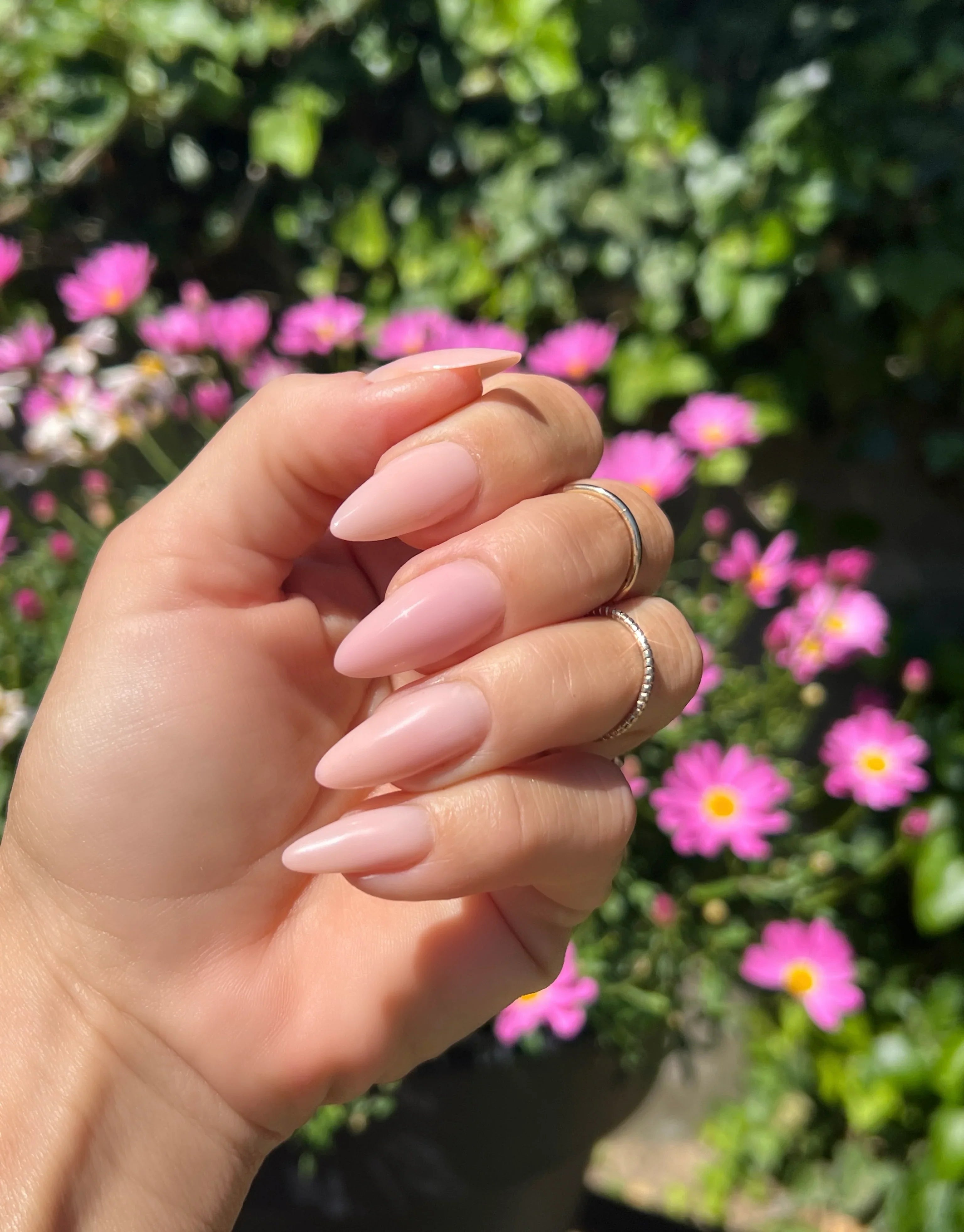Do you know the difference between acrylic and gel nails?
If you dream of long, beautiful and durable nails, you are not alone. Artificial nails have taken many women by storm worldwide. The reason for this is, among other things, that the nails can be shaped as desired, varnished in all sorts of colors and designs, and then they last for up to 4 weeks, which is an advantage in a busy everyday life. It may also be that you suffer from thin and fragile nails that easily fray or break, and here artificial nails can be your salvation.
There are different types of artificial nails. Acrylic and gel nails are very popular, but which set of nails is best for you? In this post, we delve into what the difference between gel and acrylic nails is. But first we get into what characterizes each of the two sets of nails.
Acrylic nails
Acrylic nails are extremely durable and robust, which is one of the reasons for their long-standing popularity. The acrylic itself has the consistency of a paste that is placed on the nail, after which it is shaped as desired with a brush. The paste is made by mixing powder with a liquid. UV or LED light must not be used to harden acrylic - the mass hardens by air drying.
It requires experience to work with acrylic, as the mass begins to dry as soon as it is placed on the nail and comes into contact with air. This means that the acrylic hardens just as quietly when you work with it on the nail. It can take up to a day before the acrylic mass is fully hardened, which means that the nails must avoid unnecessary contact with everyday objects and matters.
Acrylic nails can look more artificial compared to gel nails. This is due to the thicker layer, which requires more work and sanding to achieve a natural look.
To remove your acrylic nails, acetone is used, which dissolves the acrylic. This takes time, but as long as it is done correctly, it is gentler on the natural nails.
Gel nails
Gel nails consist of a viscous mass which must harden under UV or LED light. The gel is applied in several layers on top of your own natural nail until you have achieved the desired result. Between each layer, the gel must be allowed to harden. The short curing time means that you can quickly continue with the day's chores.
Gel nails are known to be flexible, but if you don't take good care of your long nails, they have a greater tendency to break compared to acrylic nails.
The shelf life is up to 4 weeks if you make sure to prepare the natural nails properly and avoid bumps and knocks. Gel nails also appear more natural compared to other types of artificial nails. You have an easier time shaping and sanding them, thereby achieving the look you dream of.
It is not possible to dissolve the gel from the nails. To remove it, the gel nail must be filed down. This can easily be done with a regular file or an electric file.
It is a good idea to be extra careful when you start filing the gel nail down. Otherwise, you risk the natural nail taking damage. Therefore, it is always an advantage to apply 2 layers of base coat before applying the first layer of gel.
Gel nails are for everyone, whether you are a beginner, experienced or professional. As a beginner, you might start out by putting a color on the nail. After a few times, you can start experimenting with more colors, or maybe make a simple design.
As soon as you have all the equipment at home, it won't be long before you can make the most beautiful nails for yourself and your friends.
Summary: What is the difference between acrylic and gel nails?
Even though you achieve beautiful and durable nails with both gel nails and acrylic nails, there are still advantages and disadvantages that you should consider before you get started with artificial nails . What you ultimately choose depends on personal preference and how much time you want to put into the various processes. We can conclude that the difference between acrylic nails and gel nails is:
- Acrylic nails are extremely strong and robust, but not as flexible as gel nails. If you are going for a more light and natural look, you should choose gel.
- Getting started with gel nails is easier - even for beginners, whereas acrylic nails require more practice to achieve a proper result.
- Gel nails harden after 30-60 seconds under UV light, whereas acrylic nails harden by air drying, and are fully cured after approx. 24 hours. You should therefore be more careful in the first day after the acrylic has been applied.
- Both types have a long shelf life, but acrylic nails usually last a little longer, as the mass is known for its hardness. On the other hand, acrylic nails often look thicker and more artificial, while gel nails have a natural shine.
- To remove gel nails, a file is used - either regular or electronic. As a beginner, you should be careful not to grind down the natural nail. Acrylic nails are removed with acetone.

